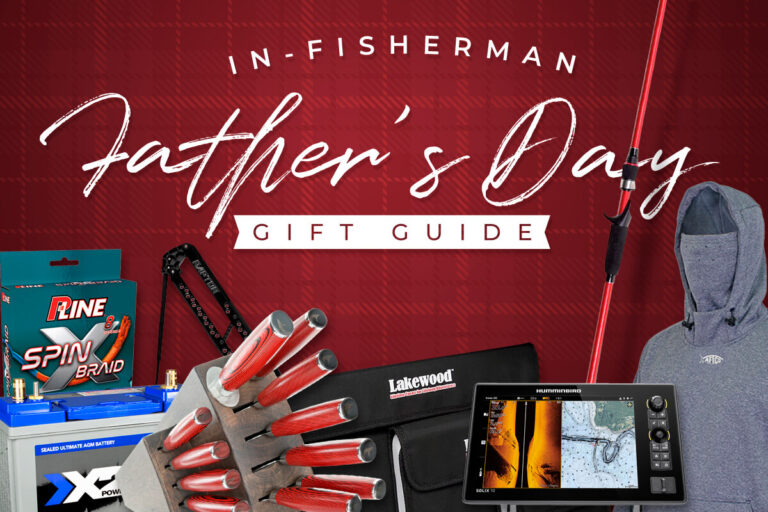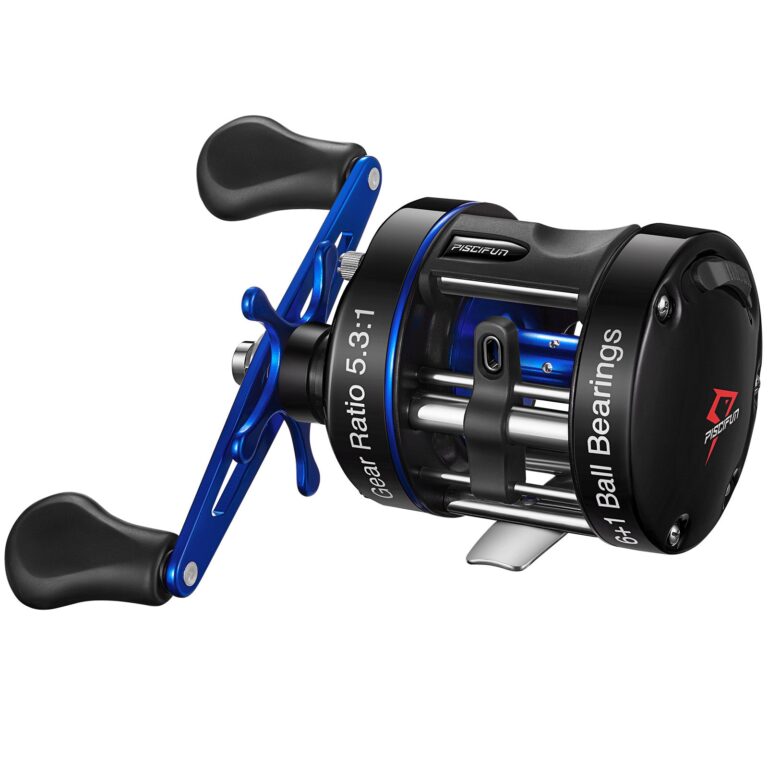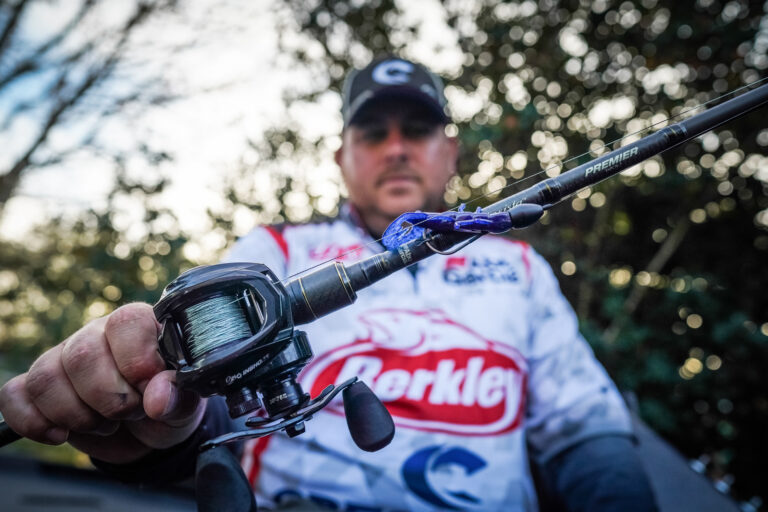Yes, you can cast a baitcaster by following these steps: adjust the brakes, set the reel tension, hold the rod at a 45-degree angle, press the thumb bar, release the thumb bar while swinging the rod forward, and apply thumb pressure on the spool during the cast to prevent backlash. Fishing with a baitcaster can be a rewarding experience once you become proficient in casting.
Baitcasting reels offer greater accuracy and control compared to spinning reels, making them popular among experienced anglers. Learning how to cast a baitcaster requires practice and mastering the proper technique, but with patience and persistence, you can effectively cast and retrieve your bait, lures, or fishing line using a baitcasting reel.
In this guide, we will walk you through the steps of casting a baitcaster reel successfully.

Credit: www.sportfishingmag.com
Understanding The Mechanics Of Baitcaster Reels
—————————————————-
Baitcaster reels are a popular choice among anglers due to their durability, accuracy, and versatility. However, mastering the art of casting with a baitcaster reel can be a little intimidating, especially for beginners. To help you get started, let’s explore the mechanics of baitcaster reels and learn how to make the most out of this fantastic fishing tool.
The Anatomy Of A Baitcaster Reel
Before we dive into the nitty-gritty details, let’s take a moment to familiarize ourselves with the key components of a baitcaster reel. Understanding the different parts will make it easier to follow along and enhance your overall casting experience. Here are the main elements you’ll find on a typical baitcaster reel:
- Frame: The sturdy and rigid frame that holds all the components together.
- Spool: The revolving component that holds the fishing line.
- Handle: The grip you use to crank the reel.
- Drag: A system that applies resistance to a hooked fish, allowing you to control line tension.
- Brakes: Adjustable mechanisms that regulate spool rotation during casting.
- Tension knob: A dial that controls the spool tension, preventing unnecessary backlash.
- Levelwind system: A mechanism that evenly distributes the line across the spool to prevent tangling.
Key Components And Features To Know
To operate a baitcaster reel smoothly, it’s essential to understand the key components and features that make it tick. Here are some crucial points to keep in mind:
- Gear ratio: This refers to the number of times the spool rotates with one complete turn of the reel handle. A higher gear ratio provides quicker line retrieval, while a lower ratio offers better torque for fighting larger fish.
- Ball bearings: These tiny metal spheres within the reel reduce friction and enable smooth operation. The higher the number of bearings, the smoother the reel will perform.
- Drag system: A reliable drag system is crucial in controlling the tension and preventing line breakage when battling powerful fish.
- Anti-reverse: This feature prevents the reel handle from turning in reverse, ensuring a solid hook set and preventing line slippage.
- Line capacity: Each baitcaster reel has a maximum line capacity, which determines the amount and strength of line it can handle.
Exploring Different Types Of Baitcaster Reels
Baitcaster reels come in various styles, each designed to cater to specific fishing needs. Let’s take a quick look at the three main types:
- Low-profile baitcasters: These reels are compact and lightweight, making them ideal for anglers who prefer all-day fishing. They offer excellent control and are suitable for a variety of fishing techniques.
- Round baitcasters: With their larger, more traditional design, round baitcasters are popular for targeting larger fish species and heavy-duty fishing applications. They have larger line capacities and more advanced drag systems to handle the extra stress.
- Saltwater baitcasters: Built with corrosion-resistant materials, saltwater baitcasters are designed to endure harsh conditions and provide optimal performance in saltwater environments. They are a favorite among saltwater anglers pursuing powerful game fish.
Gearing Up For Success
Now that you have a good understanding of baitcaster reel mechanics and the different types available, let’s discuss some important factors to consider to achieve success on the water:
- Selecting the right fishing rod for baitcaster reels:
- Choose a rod that matches the weight and style of fishing you plan to do.
- Ensure the rod has the appropriate power and action to handle your target species.
- Consider the rod length for the casting distance and control you desire.
- Choosing the right line and lure for optimal casting:
- Use a fishing line with the appropriate strength and characteristics for your angling situation.
- Select lures and baits that match the target species and fishing conditions.
- Experiment with different line and lure combinations to find what works best for you.
- Adjusting the reel’s tension and brakes for smooth casting:
- Set the spool tension knob just enough to prevent backlash but not so tight that it hinders casting distance.
- Adjust the braking system to control the spool rotation during casting based on wind conditions, lure weight, and personal preference.
- Practice casting techniques and make small adjustments until you achieve your desired casting distance and accuracy.
Mastering the mechanics of baitcaster reels takes time and practice. With patience and proper technique, you’ll soon be casting like a pro and reeling in those trophy catches with ease. So, gear up, hit the water, and have a fantastic fishing experience with your baitcaster reel!
Mastering Baitcaster Casting Techniques
Can You Cast A Baitcaster?
Baitcasting reels are a popular choice among fishermen for their accuracy and ability to handle heavier lures and lines. However, mastering the art of casting with a baitcaster can be a challenging task. In this section, we will delve into the various techniques and skills required to become proficient at baitcaster casting.
From perfecting thumb control to troubleshooting common casting problems, we will cover it all.
Perfecting The Thumb Control: Braking And Casting
- Developing thumb coordination and control:
- Understanding the role of your thumb in controlling the line during casting.
- Practicing with lighter lures to improve thumb coordination.
- Gradually increasing weight and complexity to build muscle memory.
- Understanding the role of braking systems:
- Explaining the importance of braking systems in baitcasting reels.
- Highlighting the different types of braking systems.
- Tips for adjusting the brakes for optimal casting performance.
- Mastering the art of feathering:
- Explaining the concept of feathering the line to control the cast.
- Techniques for applying pressure on the spool with your thumb.
- How to release the pressure at the right moment for a smooth cast.
Fine-Tuning Your Casting Form And Technique
- The correct grip and stance for efficient casting:
- Exploring different grip styles for baitcasting reels.
- Discussing the advantages of each grip and finding the one that suits you.
- Tips for maintaining a stable stance and body position during casting.
- Essential casting techniques: Overhead, sidearm, and pitching:
- Breakdown of the three main casting techniques for baitcasters.
- Step-by-step instructions for executing each technique correctly.
- Advantages and best use cases for each casting technique.
Practicing Precision: Casting Accuracy And Distance
- Tips for improving casting accuracy:
- Focusing on target visualization and alignment.
- Effective wrist and arm movements for precise casting.
- Practicing with targets and performing accuracy drills.
- Techniques for gaining casting distance:
- Utilizing the power of your rod and arm to generate speed.
- Proper timing and release for maximum distance.
- The role of lure weight and line tension in achieving greater distance.
Troubleshooting Common Casting Problems
- Addressing backlash and how to prevent it:
- Identifying the causes of backlash and preventing it from occurring.
- Adjusting brake settings and spool tension to minimize backlash.
- Techniques for removing backlash and untangling the line.
- Fixing tangled lines and bird’s nests:
- Steps to untangling a tangled line and resolving bird’s nests.
- Tips for preventing tangled lines during casting.
- Proper line management and maintenance.
Dealing With Wind And Other External Factors
- Adjusting casting technique for windy conditions:
- Understanding how wind affects casting accuracy and distance.
- Techniques for casting against or with the wind.
- Utilizing wind breaks and obstacles for improved casting performance.
- Adapting to other external factors:
- Considering other factors such as water currents, obstructions, and light conditions.
- Modifying casting techniques to accommodate these factors.
- Being aware of the environment to optimize baitcaster casting.
Mastering baitcaster casting techniques requires practice, patience, and a deep understanding of the reel’s mechanics. By perfecting thumb control, refining your form and technique, and troubleshooting common casting problems, you’ll be well on your way to becoming a proficient baitcaster caster.
So grab your baitcasting reel, hit the water, and start honing your skills to take your fishing game to the next level.
Deepening Your Baitcaster Casting Knowledge
Baitcaster reels are an essential tool for any angler looking to improve their casting game. If you’ve already mastered the basics of casting with a baitcaster reel, it’s time to take your skills to the next level. In this section, we’ll explore advanced casting techniques such as flipping and skipping, expand your casting repertoire, and provide tips for maintaining your baitcaster reel.
Advanced Casting Techniques: Flipping And Skipping
Flipping and skipping are two advanced casting techniques that can help you reach tight spots and present your bait more effectively. Here are the key points to keep in mind:
- Flipping technique:
- Flipping involves flicking your bait directly into a target area with precision.
- Hold your rod parallel to the water and release the spool with your thumb to control the distance.
- As the bait reaches its target, gently thumb the spool to reduce backlash and ensure a smooth entry.
- Skipping lures across the water:
- Skipping lures can help you access hard-to-reach areas under docks, overhanging trees, or structure.
- Use a sidearm motion to create a low trajectory and generate a skipping effect.
- Choosing the right lure with a flat bottom and lightweight design is crucial for successful skipping.
Expanding Your Casting Repertoire
To become a versatile angler, it’s important to expand your casting repertoire beyond the basic techniques. Here are some additional casting techniques to explore:
- Sidearm cast:
- The sidearm cast is ideal for casting under low-hanging obstacles.
- Keep your rod parallel to the water and extend your arm sideways to execute the cast.
- Pitching:
- Pitching is similar to flipping but allows for longer casts.
- Use your wrist to generate a pendulum motion, propelling the bait further.
- Roll cast:
- The roll cast is useful when casting in tight spaces or when backcasting isn’t possible.
- Sweep your rod in a smooth motion to build momentum and release the line.
Mastering The Flipping Technique For Precision Casting
The flipping technique requires practice and finesse to achieve accurate and silent bait entry. Here’s a step-by-step guide to mastering this precision casting technique:
- Set your bait correctly on the rod and reel setup, ensuring it’s securely held in place.
- Hold the rod parallel to the water’s surface with your non-dominant hand close to the reel.
- Release the spool with your thumb, allowing the bait to swing towards the target area.
- Use your thumb to control the spool’s rotation, gradually slowing it down to prevent backlash.
- Aim for a soft entry by feathering the line with your thumb just before the bait hits the water.
Exploring The Art Of Skipping Lures Across The Water
Skipping lures across the water can be a game-changer in enticing strikes from wary fish. To master this technique, follow these steps:
- Select a lightweight lure with a flat bottom, such as a jig or small plastic bait.
- Position yourself with a clear line of sight to the target area, allowing for a sidearm cast.
- Angle your cast low and parallel to the water, giving the lure enough speed and trajectory to skip.
- As the lure makes contact with the water, lift your rod tip slightly to maintain momentum and prevent it from sinking.
Baitcaster Reels: Pros, Cons, And Tips For Maintenance
Baitcaster reels have their advantages and disadvantages. Understanding them and knowing how to properly maintain your reel can significantly improve its performance and lifespan. Let’s delve into the pros, cons, and maintenance tips:
- Pros of baitcaster reels:
- Offers more control and accuracy in casting.
- Allows for greater line capacity and strength.
- Enables efficient lure presentation techniques.
- Cons of baitcaster reels:
- Prone to backlash, especially for beginners.
- Requires a learning curve to perfect casting technique.
- Typically more expensive than spinning reels.
Evaluating The Advantages And Disadvantages Of Baitcaster Reels
Baitcaster reels have their fair share of advantages and disadvantages. Here’s a breakdown of what you need to know:
Advantages:
- Increased control and precision in casting.
- Superior line capacity and durability.
- Effective for heavy cover fishing and targeting larger species.
Disadvantages:
- Learning curve for casting technique, leading to potential backlash.
- Higher risk of line twists and tangles.
- Greater initial investment compared to spinning reels.
Proper Cleaning And Maintenance To Ensure Optimal Performance
To keep your baitcaster reel in prime condition, regular cleaning and maintenance are essential. Follow these tips to ensure optimal performance:
- Clean your reel after every fishing trip to remove dirt, debris, and saltwater residue.
- Lubricate the reel’s moving parts, such as bearings, gears, and spool, using reel-specific lubricants.
- Inspect the reel for any signs of wear and tear, including worn-out drag washers or loose screws.
- Keep the reel stored in a protective case or cover to prevent dust and damage.
Tips And Tricks For Extending The Lifespan Of Your Baitcaster Reel
Prolong the lifespan of your baitcaster reel with these simple tips and tricks:
- Avoid excessive force or jerky movements when casting to minimize stress on the reel.
- Rinse your reel with fresh water after each use to remove salt or sand particles.
- Regularly check the line for wear and replace it if necessary.
- Store your reel in a cool and dry place, away from direct sunlight.
Transitioning To Baitcaster Reels: Tips For Beginners
Transitioning from a spinning reel to a baitcaster requires practice and patience. Follow these tips to smooth out the learning curve:
- Start with a lower gear ratio reel for easier handling and control.
- Practice casting in an open area without obstacles to prevent frustration.
- Gradually adjust the tension and braking systems to find the right settings for your casting style.
Overcoming The Learning Curve: Steps For Smooth Transition
Transitioning to a baitcaster reel may seem daunting at first, but with the right approach, you’ll overcome the learning curve. Here are the steps to ensure a smooth transition:
- Choose a beginner-friendly baitcaster reel with adjustable braking and casting controls.
- Practice casting on a grassy or open area, focusing on your thumb control and spool tension adjustments.
- Start with shorter casts and gradually increase the distance as you gain confidence in your casting abilities.
- Fine-tune your reel’s settings based on your personal preferences and casting style.
Practice Drills And Techniques To Build Confidence And Skill
Boost your casting confidence and skill with these practice drills and techniques:
- Target practice:
- Set up targets at different distances and practice hitting them consistently.
- Aim for accuracy, focusing on landing your bait within the designated zone.
- Gradually increase the complexity by incorporating obstacles or different casting angles.
- Backlash recovery:
- Purposefully induce backlashes and practice efficiently untangling them.
- Develop the muscle memory required to react quickly and minimize downtime on the water.
Seeking Guidance From Experienced Anglers And Fishing Communities
To accelerate your progress and gain valuable insights, seek guidance from experienced anglers and fishing communities. Here’s how you can tap into their knowledge:
- Join local fishing clubs or online forums to connect with seasoned anglers.
- Attend fishing workshops and seminars to learn from professionals.
- Engage in conversations and ask questions to gather tips, tricks, and advice from experienced anglers.
By expanding your casting knowledge and mastering advanced techniques, you’ll become a more versatile angler. Remember to maintain and care for your baitcaster reel properly to ensure optimal performance and longevity. With practice, patience, and guidance from experienced anglers, you’ll soon excel in the art of baitcaster casting.
Happy fishing!
Conclusion
Mastering the art of casting a baitcaster can greatly enhance your fishing skills and ability to catch more fish. By practicing the proper techniques and understanding the mechanics of the reel, you can overcome the initial learning curve and become proficient in casting a baitcaster.
Remember to adjust the spool tension, utilize the thumb control, and practice with different weight lures to achieve optimal casting distance and accuracy. Additionally, regularly maintaining and cleaning your baitcaster reel will ensure its longevity and performance. Whether you are a beginner or experienced angler, learning to cast a baitcaster opens up a whole new world of opportunities on the water.
So, with patience and dedication, embrace the challenge and get ready to experience the thrill of casting a baitcaster and reaping the rewards of a successful fishing adventure.



